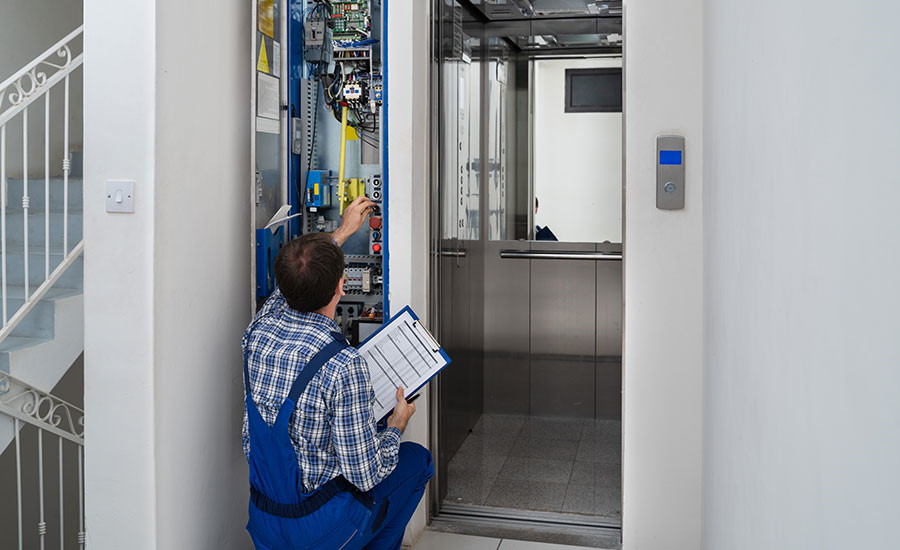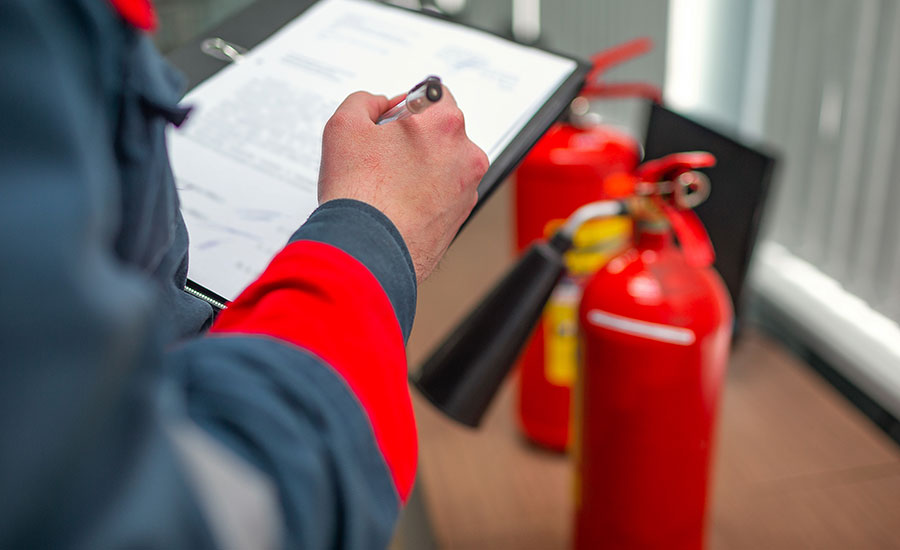
Elevator-related incidents injure about 17,000 people every year in the United States.
Repairing elevators can cost up to $2,000, and the price could rise to $20,000 if a full replacement is necessary.
A comprehensive elevator inspection checklist can help ensure the safety of users and cut costs on lift repairs.
Here, we’ll cover what items to include in your elevator maintenance checklist and explain how mobile electronic forms help technicians conduct error-free lift repairs.
Table of Contents
Discover our mobile form features!
Try doForms for free
Why Do You Need An Elevator Maintenance Plan?
Elevator maintenance is the inspection process of finding, diagnosing, and fixing issues that may cause elevator malfunction or breakdown.
Elevator service technicians perform elevator maintenance to keep lift systems safe and operating efficiently.
Without a maintenance plan, a malfunctioning elevator part can go unnoticed until a major repair is necessary. This major repair can be very costly and creates inconvenient usage downtime — especially in buildings where elderly or ailing residents need to travel to their homes above the first floor.
The value of an elevator is related to how well it is maintained throughout its lifecycle. A comprehensive elevator maintenance plan minimizes potential risks elevator/building owners and users face.
If an elevator isn’t maintained properly, the building owner could face financial exposure, liability issues and angry tenants.
Tenants, on the other hand, risk the unpleasant experience of getting stuck in an elevator, along with additional safety hazards and having to climb by foot to higher floors.
A comprehensive elevator maintenance plan should:
- Prevent expensive repairs and part replacements by catching issues early on
- Make sure elevators operate according to applicable codes
- Ensure elevators pass the required inspections
- Keep elevator users safe
Creating an elevator maintenance plan helps the entire building operate smoothly and keeps tenants satisfied with the quality of life in their building.
19 Items To Include In Your Elevator Inspection Checklist
An elevator inspection checklist prioritizes safety, ensures compliance with building regulations and helps mitigate risks to both tenants and building owners.
Your elevator maintenance checklist should contain the following items, categorized based on where they are located in the lift.
Inside The Car
- Make sure the door can open and close properly and without obstructions
- Check for damage on walls, ceiling and handrails
- Check and replace any broken lights including those in the control panel
- Make sure the emergency phone can connect the elevator user quickly with the local fire department or 911
Outside The Car
- Inspect the door panels
- Replace any broken lights on the door of the elevator on each floor
- Test the fire alarm systems
Top Of The Car
- Check cables for any signs of damage
- Inspect the brake mechanism and test the brakes
- Make sure an emergency exit is possible
- Check the hoistway for signs of vandalism
Machine Room
- Check oil levels and ensure systems are lubricated
- Remove objects that may block access to the equipment
- Check electrical wiring for any signs of defect
- Ensure there is enough headroom for technicians
The Pit
- Make sure the pit area can be properly accessed
- Check for necessary clearance
- Check for debris, dirt or water
- Locate signs of damage on the car frame
What Are The Key Elevator Servicing Requirements & Preparation Steps?
The American Society of Mechanical Engineers (ASME) and The National Institute For Occupational Safety and Health (NIOSH) have established the elevator maintenance requirements that all relevant parties – elevator owners and service technicians – must adhere to.
These requirements include:
- Inspection of elevators on a periodic basis and monthly preventive maintenance.
- Cleaning, lubricating, and adjusting all elevator components that control the mechanical operation of the elevator.
- Executing electrical equipment tests such as control boxes, electrical circuits, and electrical wings is also a part of preparing for preventive elevator maintenance.
- Maintenance of safety equipment, its acceleration, and deceleration is a high priority to prevent any incidents.
Before performing the actual elevator maintenance, there are several steps a technician should take to prepare for servicing.
These preparation steps include:
- Communicate with building tenants: Tenants should know when scheduled maintenance is going to take place. An elevator maintenance specialist should inform tenants of this via notices and signs in the building. Elevator maintenance should not be performed at high traffic periods. Alternative elevators and stairs should be available during maintenance hours.
- Perform a tool audit: A technician should perform an audit of their service equipment to determine the condition and make sure everything is working properly before servicing the elevator.
- Put workplace protective practices in place: In particular, a lift maintenance specialist should shut down and lock electrical circuits when the elevator is being serviced. He or she should also have fall protection equipment during service, especially near elevator shafts.
- Prepare a report template: After finishing the elevator inspection, a technician must send a comprehensive report that includes photos of any unit defects and a description of operational issues. It is important to prepare a report form in advance because it is necessary for regulatory compliance and maintenance logs.
Also Read:
How To Carry Out A Lift Maintenance Inspection?
Lift maintenance inspection is extremely important to ensure the safety of elevator users.
To make sure you carry out elevator maintenance properly, follow these four vital steps and best practices:
- Perform regular maintenance: Use preventive methodology when approaching elevator maintenance by scheduling regular monthly services to identify possible issues before they occur.
- Identify problem spots early: Preventing serious malfunctions by identifying issues in time not only stops these malfunctions from happening but also reduced the costs of future repairs.
- Make sure the elevator machine room works properly: The machine room is what keeps an elevator running smoothly. Make sure the machine room self-closes and that no one can open it or have access without authorization. The room should also have good lighting and be free of any fire hazards.
- Keep elevator units in working order by adhering to the checklist: An elevator is a sum of many smaller parts, so consult your elevator maintenance checklist to make sure you don’t miss any of the checklist steps, from broken emergency lights to fire recall service malfunction.
After completing the elevator maintenance inspection, you should create a maintenance report that summarizes the inspection and includes a request for future servicing.
Electronic mobile forms are a one-stop-shop solution that lets you build your own elevator maintenance checklists and reports and send them to your office and other necessary parties while on-site.
How To Create Your Own Elevator Maintenance Checklist With Mobile Forms?
With doForms, you can easily build checklist forms and post-maintenance reports quickly, efficiently and on-site.
Our electronic mobile forms have an intuitive dashboard and over 30 drag-and-drop features for building checklists and reports from scratch or from existing templates. The DIY nature of our forms provides you with the necessary scalability and flexibility that different projects may require.
doForms helps you fill checklists and collect data on-site or remotely – even without internet connectivity required!
You can sync the data you capture during the elevator maintenance process with your business central database, upload it and store it on a cloud server and make it accessible to your collaborators from anywhere.
Elevator Inspection Checklist Takeaways
Having a well-defined elevator inspection checklist and maintenance plan helps minimize safety risks, cuts down expenses of costly repairs, and ensures the elevator is working according to regulations.
When creating your own elevator inspection checklist, it is important to include essential items that a technician should check inside, outside, and at the top of the car, as well as in the pit and machine room.
State regulations require elevator inspection on a regular basis. Using doForms’ electronic mobile forms, you can come prepared for any scheduled or nonscheduled maintenance session thanks to highly-tailored electronic elevator inspection checklists.
With doForms, you can:
- Build a checklist suitable for specific maintenance jobs
- Collect on-site data during elevator inspection and maintenance
- Take photos and send them to your central office
- Take electronic signatures
- Create comprehensive reports
- Upload data to a cloud server and make it available to your collaborators





